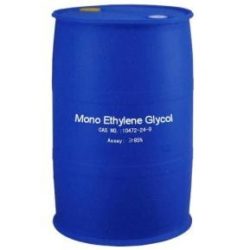Description
It can be synthesized either from molasses by fermentation or by hydration of ethylene. It acts as a hydrogen source and reaction medium during the transfer hydrogenation of carbonyl compounds in the presence of sodium hydroxide.
Ethanol, fundamental alcohol is an important raw material for the synthesis of various compounds. It can be synthesized both from molasses by fermentation or by hydration of ethylene. It serves as a hydrogen source and reaction medium during the transfer hydrogenation of carbonyl compounds in the ubiquity of sodium hydroxide. The impact of ethanol/water fumigation on the completion of diesel engines has been studied.
Denatured Ethanol
Denatured alcohol is also referred to as industrial methylated spirit. Ethanol (denatured), can be synthesized both from molasses by fermentation or by hydration of ethylene. It is made non-consumable by the addition of denaturants. It possesses numerous names – Ethanol, ethyl alcohol, denatured alcohol, denatured ethanol among others. Bittrex is used to make Ethanol denaturant.
Denatured ethanol has a small % of denaturing agent added to make the ethanol undrinkable (Bittrex). Aside from the denaturing agent, denatured ethanol is exactly the same as normal ethanol. The denaturants are added to ensure that the ethanol cannot be consumed as a spirit. In this regard, denatured ethanol is very similar to methylated spirits.
Methylated spirit is ethanol mixed with methanol. It may have small amounts of other chemicals added, as well as a distinctive purple dye. Mixing ethanol and methanol gives meths a strong, unpleasant smell. Methanol is very toxic when consumed when absorbed through the skin or inhaled in high concentrations.
In educational settings, it is a popular solvent for conducting biochemistry or chemistry experiments. In industry, it can be used for manufacturing coatings, cosmetics, detergents, perfumes, pharmaceuticals, printing inks, polymer solutions, or vaccines.
SPECIFICATION
| CAS | 64-17-5 |
| Molecular Formula | C2H6O |
| Molecular Weight (g/mol) | 46.069 |
| IUPAC Name | Ethanol |
| SMILES | CCO |
| Linear Formula | C2H5OH |
| Synonym | Ethyl alcohol, Alcohol, Methyl carbinol, Grain alcohol, Ethyl hydroxide, Ethyl hydrate, Algrain, alkohol, anhydrol, tecsol & ….. |
| Physical Form | Liquid |
| Density | ∽0.8g/mL |
| Packaging | 96% Denatured w/IPA and Methanol |
| Color | Colorless |
| Chemical Name or Material | Ethyl Alcohol |
Additional Information
Safety
- GHS02, GHS07, GHS08, GHS09
- Signal word Danger
- Hazard statements H225 – H319 – H371 – H411
- Precautionary statements P210 – P233 – P240 – P273 – P305 + P351 + P338 – P308 + P311
- Target organs Eyes
- Personal Protective Equipment Eye shields, Face shields, Gloves, multi-purpose combination respirator cartridge (US), type ABEK (EN14387) respirator filter
- RIDADR UN1170 – class 3 – PG 2 – Ethanol
- Flash Point(F) 48.2 °F – closed cup
- Flash Point(C) 9 °C – closed cupEthanol is a flammable, mildly toxic liquid that can be ignited at most ambient temperature. Flashback along a vapour trail could occur and it could explode if in an enclosed area.
NEVER mix with Piranha solution, because contact with sulphuric acid and potassium or hydrogen peroxide can cause explosions.
Skin contact should be avoided, so gloves (like Neoprene, Butyl, or Viton), goggles, and appropriate ventilation (fume hood) should be used. Since reagent grade denatured ethanol is more toxic than non-denatured ethanol, because it contains methanol and isopropyl alcohol, always review your SDS for guidelines.








Reviews
There are no reviews yet.